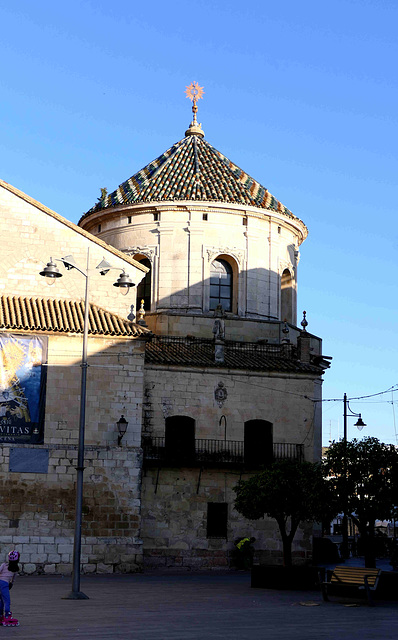Lucena - Iglesia de San Mateo
Lucena - Iglesia de San Mateo
Lucena - Iglesia de San Mateo
Lucena - Reiki y Tarot Estrella
Lucena - Scooter
Antequera - Dolmens Site
Antequera - Dolmens Site
Antequera - Dolmen de Viera
Antequera - Dolmen de Menga
Antequera - Dolmen de Menga
Antequera - Dolmen de Menga
Antequera - Tholos de El Romeral
Antequera - Tholos de El Romeral
Loja
Loja - Santa Teresa
Necrópolis de Sierra Martilla
Necrópolis de Sierra Martilla
Necrópolis de Sierra Martilla
Écija - Museo Histórico
Écija - Museo Histórico
Écija - Museo Histórico
Écija - Museo Histórico
Écija - Museo Histórico
Lucena - Iglesia de San Mateo
Lucena
Dolmen de El Charcón
Dolmen de El Charcón
Jerez de la Frontera
Jerez de la Frontera - Alcázar
Jerez de la Frontera - Alcázar
Jerez de la Frontera - Alcázar
Jerez de la Frontera - Alcázar
Jerez de la Frontera - Alcázar
Jerez de la Frontera - ANTONIO GARCÍA
Cartuja de Jerez de la Frontera
El Puerto de Santa María - Castillo de San Marcos
El Puerto de Santa María
El Puerto de Santa María - Palacio de Aranibar
El Puerto de Santa María -Chuches el curricuki
El Puerto de Santa María - La Ponderosa
El Puerto de Santa María - No War
El Puerto de Santa María - La Divina Pastora
El Puerto de Santa María - Iglesia Mayor Prioral
Cadiz - Puente de la Constitución de 1812
Strait of Gibraltar
Location
Lat, Lng:
You can copy the above to your favourite mapping app.
Address: unknown
You can copy the above to your favourite mapping app.
Address: unknown
See also...
Keywords
Authorizations, license
-
Visible by: Everyone -
All rights reserved
-
80 visits
Lucena - Iglesia de San Mateo


Lucena was known to the Moors as Al-Yussena. From the 9th to the 12th century, Lucena was an important Jewish center and was characterized by a predominantly Jewish population. In the 11th century, there was a large Talmudic academy here.
With the beginning of the Almoravid and Almohad rule, the number of Jews fell drastically. The Jews fled to places in the Christian north, were forcibly converted to Islam or deported as prisoners to North Africa. Lucena was conquered by the Almohads in 1148, after which it ceased to exist as a Jewish center.
Today, Lucena is a city with around 50,000 inhabitants and is known for its “Semana Santa”.
The church of San Mateo was built on the ancient ruins of the main synagogue of Lucena. After the arrival of the Almohad Empire in 1138, the synagogue was converted into a mosque and, finally, in 1240 it was consecrated as a church after the conquest by Ferdinand III of Castile.
In 1498, when Diego Fernández de Córdoba, governor of the Donceles and I Marquis of Comares, decided to demolish the original structure by virtue of its new status and build a new temple under the design of the architect Hernán Ruiz I. The tower was completed in 1501 and the church was probably completed in 1544.
The octagonal tabernacle chapel is a landmark of Andalusian Baroque, designed by Leonardo Antonio de Castro and built between 1740 and 1772
With the beginning of the Almoravid and Almohad rule, the number of Jews fell drastically. The Jews fled to places in the Christian north, were forcibly converted to Islam or deported as prisoners to North Africa. Lucena was conquered by the Almohads in 1148, after which it ceased to exist as a Jewish center.
Today, Lucena is a city with around 50,000 inhabitants and is known for its “Semana Santa”.
The church of San Mateo was built on the ancient ruins of the main synagogue of Lucena. After the arrival of the Almohad Empire in 1138, the synagogue was converted into a mosque and, finally, in 1240 it was consecrated as a church after the conquest by Ferdinand III of Castile.
In 1498, when Diego Fernández de Córdoba, governor of the Donceles and I Marquis of Comares, decided to demolish the original structure by virtue of its new status and build a new temple under the design of the architect Hernán Ruiz I. The tower was completed in 1501 and the church was probably completed in 1544.
The octagonal tabernacle chapel is a landmark of Andalusian Baroque, designed by Leonardo Antonio de Castro and built between 1740 and 1772
William Sutherland, Dimas Sequeira, Alexander Prolygin have particularly liked this photo
- Keyboard shortcuts:
Jump to top
RSS feed- Latest comments - Subscribe to the comment feeds of this photo
- ipernity © 2007-2025
- Help & Contact
|
Club news
|
About ipernity
|
History |
ipernity Club & Prices |
Guide of good conduct
Donate | Group guidelines | Privacy policy | Terms of use | Statutes | In memoria -
Facebook
Twitter

Sign-in to write a comment.